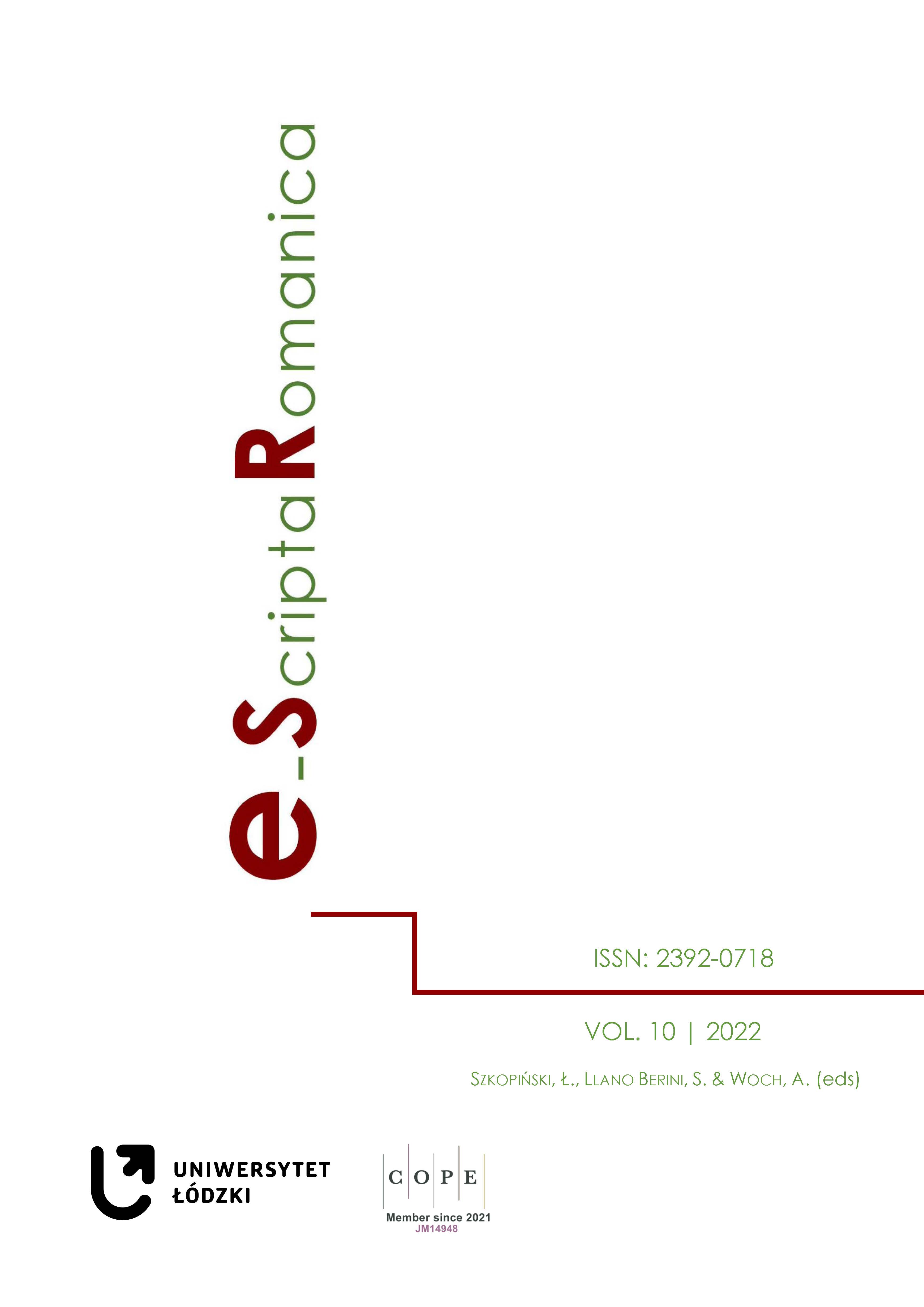Congruence of two polyphonic theories in the stylistic analysis of novelistic texts: intertextuality and dialogism in Maurice Bandaman’s L’état z’héros ou la guerre des gaous
DOI:
https://doi.org/10.18778/2392-0718.10.01Keywords:
stylistics, dialogism, intertextuality, polyphony, literarityAbstract
L’état z’héros is a work in which Maurice Bandaman integrates the tale into the frame structure of the novel. Its discursivity is based on a number of oral intertexts including ritual songs, stanzas, opuses and references integrated in the form of a literary collage. At the narrative level, the voices of the narrators interact with those of the characters in dialogues and autonomous monologues by characters or narrators. These dialogic relationships highlight narrative metalepses that are polyphonic. It is one of the marks of literarity, the main driving force of stylistic analysis. The aims of this article are, firstly, to show that dialogism and intertextuality are two approaches echoing each other in the stylistic analysis of novelistic texts and, secondly, to prove that intertextual relations lead to polyphony and bring literarity to the fore.
References
BAKHTINE, M. (1978). Esthétique et théorie du roman. Paris : Gallimard.
Google Scholar
BAKHTINE, M. (1998). La poétique de Dostoïevski. Paris : Seuil.
Google Scholar
BANDAMAN, M. (2016). L’état z’héros où la guerre des gaous. Paris/Abidjan : Michel Lafon et Frat Mat.
Google Scholar
BONHOMME, M. (1998). Les figures clés du discours. Paris : Seuil.
Google Scholar
COMPAGNON, A. (1998). Le Démon de la théorie. Littérature et sens commun. Paris : Seuil.
Google Scholar
COULIBALY, A. (2017). Le postmodernisme littéraire et sa pratique chez les romanciers francophones en Afrique noire. Paris : L’Harmattan.
Google Scholar
GENETTE, G. (2007). Discours du récit. Paris : Seuil.
Google Scholar
GIGNOUX, A.-C. (2006). De l’intertextualité à la récriture. Cahiers de Narratologie, 13. http://journals.openedition.org/narratologie/329 [10/12/2021]. https://doi.org/10.4000/narratologie.329
Google Scholar
DOI: https://doi.org/10.4000/narratologie.329
KRISTEVA, J. (1969). Sémiotikè. Recherches pour une sémanalyse. Paris : Seuil.
Google Scholar
LAMONTAGNE, A. (1992). Les mots des autres. La poétique intertextuelle des œuvres de Hubert Aquin. Québec : Presses Universitaires de Laval.
Google Scholar
MAINGUENEAU, D. (2013). Le discours littéraire. Paratopie et scène d’énonciation. Paris : Armand Colin.
Google Scholar
MARTHE, R. (1992). Roman des origines et origine du roman. Paris : Gallimard.
Google Scholar
N’DA, P. (2003). L’écriture romanesque de Maurice Bandaman ou la quête d’une esthétique africaine moderne. Paris : L’Harmattan.
Google Scholar
NOUMSSI, G. M. (2009). La créativité langagière dans la prose romanesque d’Ahmadou Kourouma. Paris : L’Harmattan.
Google Scholar
RIFFATERRE, M. (1979). Sémiotique intertextuelle : l’interprétant. Revue d’esthétique, 1-2, pp. 128-146.
Google Scholar
TODOROV, T. (1970). Introduction à la littérature fantastique. Paris : Seuil.
Google Scholar
Downloads
Published
How to Cite
Issue
Section
License

This work is licensed under a Creative Commons Attribution-NonCommercial-NoDerivatives 4.0 International License.











